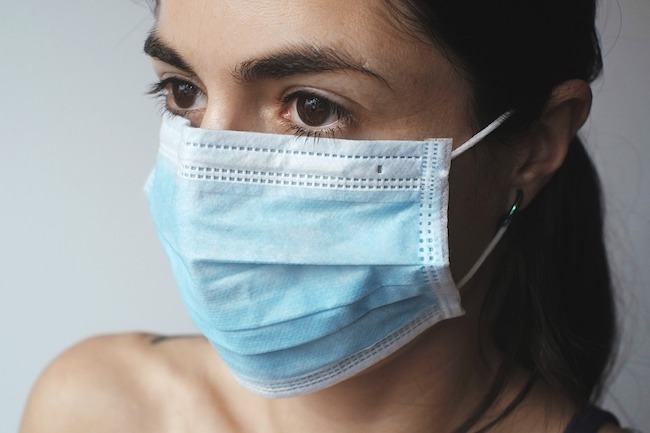Masks Are a Ticking Time Bomb by Dr. Joseph Mercola for Mercola
The planet may be facing a new plastic crisis, similar to the one brought on by bottled water, but this time involving discarded face masks. “Mass masking” continues to be recommended by most public health groups during the COVID-19 pandemic, despite research showing masks do not significantly reduce the incidence of infection.1
As a result, it’s estimated that 129 billion face masks are used worldwide each month, which works out to about 3 million masks a minute. Most of these are the disposable variety, made from plastic microfibers.2
Ranging in size from five millimeters (mm) to microscopic lengths, microplastics, which include microfibers, are being ingested by fish, plankton and other marine life, as well as the creatures on land that consume them (including humans3).
More than 300 million tons of plastic are produced globally annually — and that was before mask-wearing became a daily habit. Most of it ends up as waste in the environment, leading researchers from the University of Southern Denmark and Princeton University to warn that masks could quickly become “the next plastic problem.”4
Why Disposable Masks May Be Even Worse Than Plastic Bottles
The bottled water crisis is now well-known as a leading source of environmental plastic pollution, but it’s slated to be outpaced by a new mask crisis. While about 25% of plastic bottles are recycled, “there is no official guidance on mask recycle, making it more likely to be disposed of as solid waste,” the researchers stated. “With increasing reports on inappropriate disposal of masks, it is urgent to recognize this potential environmental threat.”5
Not only are masks not being recycled, but their materials make them likely to persist and accumulate in the environment. Most disposable face masks contain three layers — a polyester outer layer, a polypropylene or polystyrene middle layer and an inner layer made of absorbent material such as cotton.
Polypropylene is already one of the most problematic plastics, as it’s widely produced and responsible for large waste accumulation in the environment, as well as being a known asthma trigger.6 Further, the researchers noted:7
“Once in the environment, the mask is subjected to solar radiation and heat, but the degradation of polypropylene is retarded due to its high hydrophobicity, high molecular weight, lacking an active functional group, and continuous chain of repetitive methylene units. These recalcitrant properties lead to the persistence and accumulation in the environment.”
They also stated that when the masks become weathered in the environment, they can generate a large number of microsized polypropylene particles in a matter of weeks, then break down further into nanoplastics that are less than 1 mm in size.
Because masks may be directly made from microsized plastic fibers with a thickness of 1 mm to 10 mm, they may release microsized particles into the environment more readily — and faster — than larger plastic items, like plastic bags.
Further, “Such impacts can be worsened by a new-generation mask, nanomasks, which directly use nanosized plastic fibers (e.g., diameter <1 mm) and add a new source of nanoplastic pollution.”8 A report by OceansAsia further estimated that 1.56 billion face masks may have entered the world’s oceans in 2020, based on a global production estimate of 52 billion masks manufactured that year, and a loss rate of 3%, which is conservative.
Based on this data, and an average weight of 3 to 4 grams for a single-use polypropylene surgical mask, the masks would add 4,680 to 6,240 additional metric tons of plastic pollution to the marine environment, which, they note, “will take as long as 450 years to break down, slowly turning into microplastics while negatively impacting marine wildlife and ecosystems.”9




